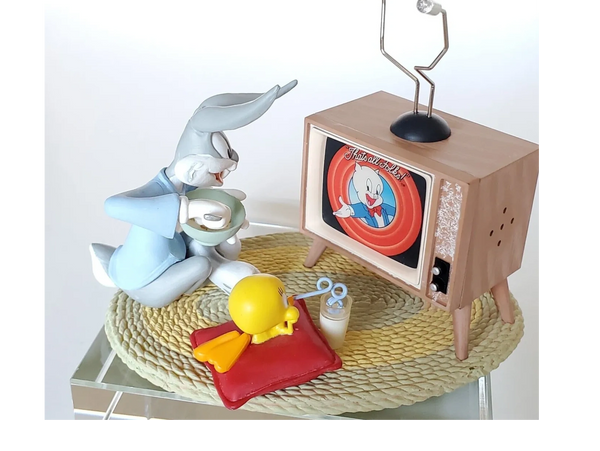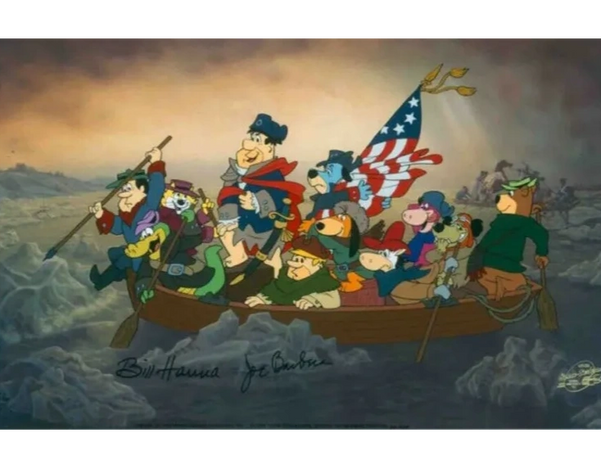ABOUT US

I was a child at a time when 24/7 networks dedicated to cartoons did not exist, so I looked forward to Saturday mornings in my pajamas in front of a television. Although I enjoyed watching the cartoons, I always found a different satisfaction carefully viewing the opening and closing credits where they listed the voice artists, writers, animators, directors, and producers. Even at that young age I somehow knew that there was collaboration in making the cartoon happen.

In the early 1970’s, I grew up spending considerable time with my grandparents watching their “old shows”. Without much exposure to television, I thought that all live action shows were in black and white and only cartoons were in color. It is because of this that I was continually exposed to the artists that my young peers were not. My teachers always thought I was an “old soul” because I knew the works of people like Jimmy Durante, Mae West, Arthur Godfrey, the Andrews Sisters, Cab Calloway, Enrico Caruso, and thought that the Marx Brothers and Abbott and Costello were very funny. I would watch television shows with my grandparents and say things like, the neighbor on The Burns and Allen show sounds like Betty Rubble on the Flintstones or Blondie from the Sunday afternoon Dagwood movies has the same voice as Jane Jetson.

I was also confused how Shaggy from Scooby Doo was doing a Sunday morning Top 40 song countdown. Since my grandparents didn’t understand this, I was determined to prove these people lived outside of black and white television shows. I remember taking photos of the cartoon credits with an Instamatic camera and anxiously waiting a week to get the film developed just to prove my point. And those musical chase scenes on Scooby Doo and Josie and the Pussycats made me so happy. Years later, I learned that the music on Josie and the Pussycats was sung by Cherie Moor. She was the same woman on a poster that adorned my bedroom wall. She was starring on Charlie’s Angels but calling herself Cheryl Ladd. Adolescent mind blown.

When I started teaching high school, I resorted to an unconventional approach to inspire student learning by using items from my burgeoning animation collection. When teaching medical laboratory technology, I used the Simpsons' 13th season episode in 2002, titled “Weekend at Burnsie’s”, where Homer Simpson is put on medical marijuana after being attacked by a murder of crows to encourage very thoughtful ethical pro/con essays from my students. Ironically, twenty years later, that conversation is just as relevant as more states push for marijuana legalization and the medical literature discusses its health benefits and harm.

I have used my animation resources to entice students into learning different subject areas. For example, when I taught chemistry to a group of high school cosmetology students, I used bars of soap in the recognizable shapes of Fred Flintstone and Dino to initiate a conversation about the molecular and chemical properties of soap that allow it to get objects clean. I created an accompanying laboratory assignment where students created their own bar of soap. The students remained engaged in the lessons as they appreciated how soap was made but also realized the entrepreneurial opportunity that could come from this experience. Technically, they said, "Wow, soap can come in flavors." They meant scents, but point gotten.

In collaboration with an English teacher, I used animation cels of Scooby Doo as the impetus for students to improve their writing through storytelling and journaling. Students in a physics class were shown a classic Road Runner cartoon where the coyote was yet again unsuccessful at capturing him. During the introduction, I was able to introduce the students to the legendary animator and creator behind this and many other Looney Tunes & Merrie Melodies cartoons: THE Chuck Jones. I was able to devise a series of lessons with activities where students could use the formula for acceleration to calculate what factors would need to change to prevent the anvil from hitting the coyote. A further series of mathematical problems would have the students manipulate the equation to determine what Wile E. Coyote could do to finally catch the Road Runner. The student with the most correct answers fittingly became Acme’s Employee of the Month.

I have also worked with a history teacher to create an American history lesson based on a comparison of the 1851 “Crossing the Delaware” painting by Emanuel Leutze and the similarly named limited edition cel with Hanna Barbera characters. This culminated with the students visiting the Metropolitan Museum of Art where one of the copies of the painting was on display. In addition to using animation to engage students in diverse academic subjects, the collection helps educate others about the talents of the people behind the animation.

I continue to be surprised at how few people know about the great animators, producers, script writers, creators and voice actors behind America’s favorite cartoons. In some cases, their legacies are unjustly relegated to a footnote on a Wikipedia page. The museum is an attempt to correct this injustice. It can educate people as they gather understanding, appreciation, celebration and respect for the artistry and creativity that paved the way for the animation art that exists today.
